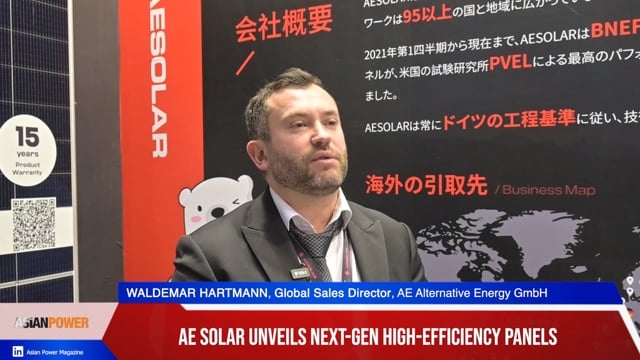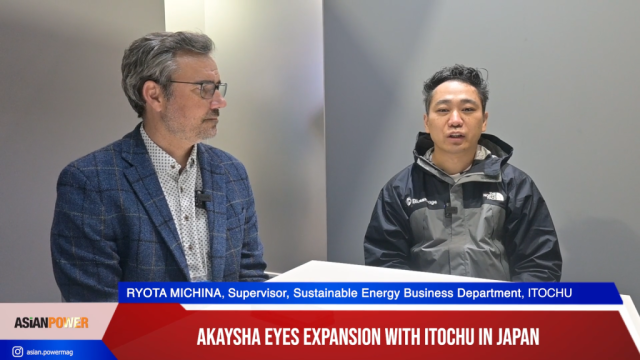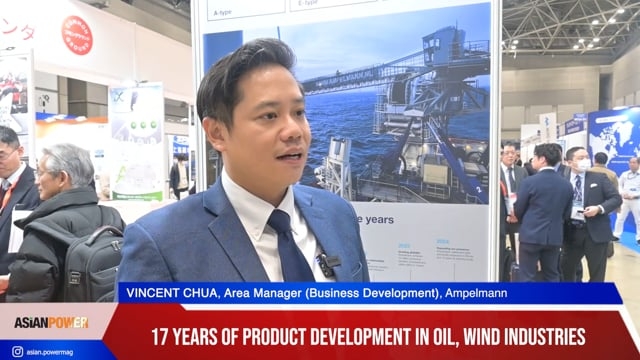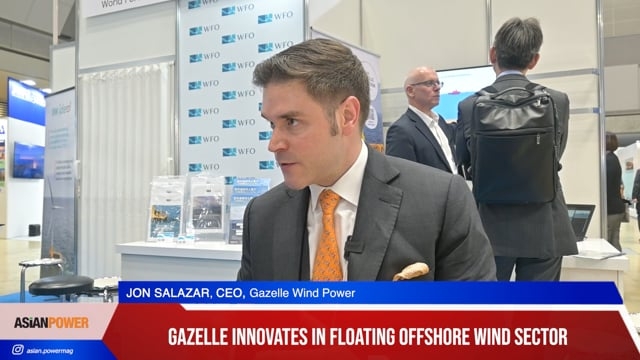
Asian Power Awards welcomes Mike Thomas as one of its judges
The Lantau Group’s founding partner highlights the opportunities for both gas and renewables players in the near future.
Mike Thomas, a founding partner at The Lantau Group, has over 30 years of consulting experience focusing mainly on the energy sector. He advises a wide range of energy stakeholders on strategies and regulatory matters, market design and development, commercial transactions, and disputes.
More specifically, within the Asia Pacific region, he has led many engagements involving the robust application of economics and analytics to a wide variety of business, policy, and regulatory challenges.
Asian Power welcomes back Mike as he joins the panel of judges in this year’s Asian Power Awards. In an interview, he shares his insights on the current status of the power sector as it opens opportunities for both gas and renewables players trying to figure out how they fit together over the next decade and beyond.
Which particular sectors are your main focus? What do you like most about being an adviser/consultant to many companies about the energy sector?
What’s not to like in such a dynamic industry? Where else can you combine an appreciation of both the old (big spinning machines) and new (big data analytics); of the models (what might happen) and the strategies (what should we do); and of the challenges of replacing the wings on a plane (transforming the sector) whilst staying in flight (keeping the lights on)? These are interesting and challenging times and the best is yet to come for sure.
What are the biggest trends you've observed from the Asia Pacific's energy sector in recent years?
Sustainability considerations are becoming a much stronger driver across the markets in the region. Whether it be committed RE100-type leaders looking to reduce their Scope 3 emissions in markets that do not have a full set of options or regulators and utilities trying to answer the question of who pays for what, we see the energy shift becoming a significant factor in almost all our work now. Even so, we are still only talking about a small part of the overall Asia Pacific energy context. Sometimes, it is easy to overlook just how large the energy sector is. If you think of the world as “part signal” and “part noise”, the noisy parts can draw a lot of attention, but the signal is still there. Sustainability is becoming (and needs to become) the signal, but it is still very much the noise. The energy transition still seems likely to take about two decades to play out. Some might argue for three, especially in Asia.
How has the pandemic affected the energy sector? What advice would you give energy companies affected by the pandemic?
There have been three big impacts on the energy sector. First, the initial demand disruption and periodic disruptions of lockdowns and movement controls has had short-term but very deep impacts on energy usage. At the beginning almost everything was uncertain. Would there be a global recession? But things have kept going. Demand has shown some robustness, particularly when movement is possible, even if total consumption has not fully recovered. The big effects have been the lockdowns. Whenever movement is possible, you see lots of vitality in the global economy. Second, if anything we’ve seen a boom in energy-related work. We’re just super busy. Third, we also see delays in project completions, usually due to the difficulties of moving people and equipment to sites in those countries with significant COVID outbreaks. If a market was tight before covid, it is likely to be tighter before things rebalance.
With the environmental, social, and governance factors (ESG) gaining more influence in businesses and investments, what sustainability options/initiatives can you recommend energy sector companies to include in their strategy?
Our main advice is to pay attention. The ESG leaders are spending a lot of effort to understand these markets, form their own assessments of what is possible, advocate for changes, secure partnerships, and, generally, be proactive rather than reactive. Sometimes, this results in a high profile mega-announcement like TSMC or BASF, but, actually, it is not at all easy to build out a green portfolio across Asia. It can be tricky to ensure you have access to the green attribute. And often, there are programs (such as Malaysia’s LSS and NOVA programs) that are quickly subscribed, limiting available opportunities. Fortune favours the well-prepared.
What are some of the investment challenges in the region’s power sector?
There is a widespread belief that green energy options are supposed to be cheaper than conventional energy. Perhaps this sentiment comes from experience with on-site solar which can be cheaper because of avoiding existing tariffs that cover a wide range of system-wide costs. There is also the argument that the LCOE of RE projects is falling below the LCOE of conventional projects. But every market is different. Many markets have excess conventional capacity – they just don’t need new capacity right now. New RE is not competing against the LCOE of new investment but against the SRMC of existing assets. Accordingly, without policy or corporate PPA support, there’s not enough value available. As it has always been, policy and regulatory uncertainty are the biggest challenges. But sometimes people want to believe in a kind of mathematical magic whereby more RE is somehow going to be always cheaper. Maybe the biggest challenge of the energy transition is the difficulty of accepting that we will need to pay a premium if we want RE to enter into existing systems at an ever-faster rate.
Crisis presents opportunities, they say.
Where are the opportunities for industry players in the region in the middle and post-pandemic era?
There’s a very interesting intersection of opportunities that both gas and renewables players are trying to figure out: how they can both fit together over the next decade and beyond, with gas benefiting from the increasing availability of supply infrastructure and increased flexibility in sourcing and contracting options, whereas renewable energy can be quite confident to derive robust value as a way to displace relatively more costly gas, but only when the source of renewable energy is available. The energy transition needs both, plus a whole lot more.























 Advertise
Advertise








